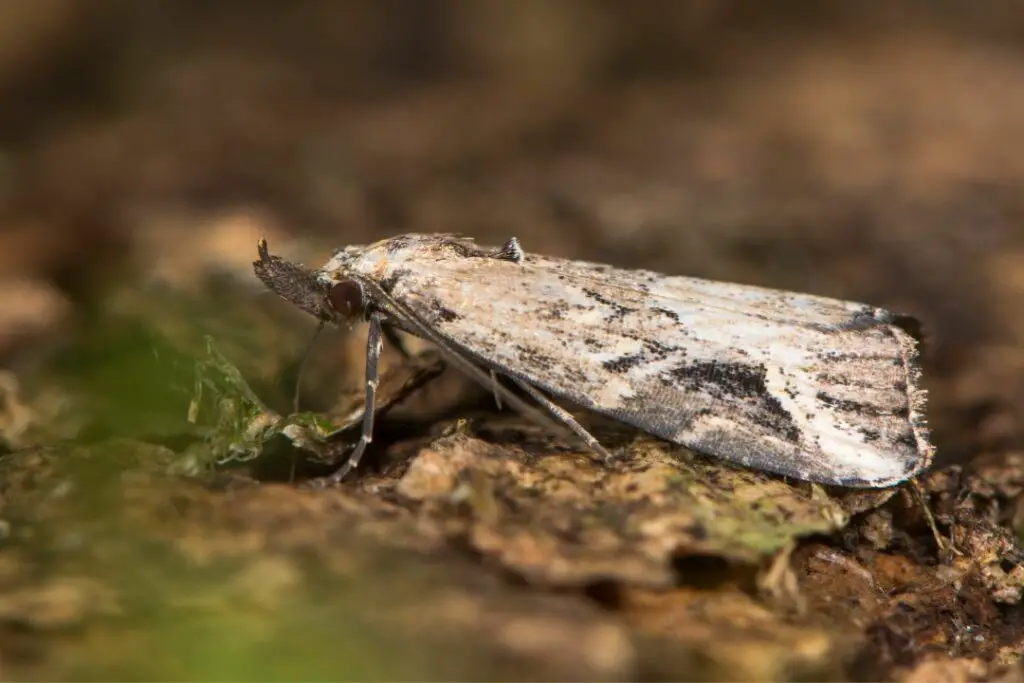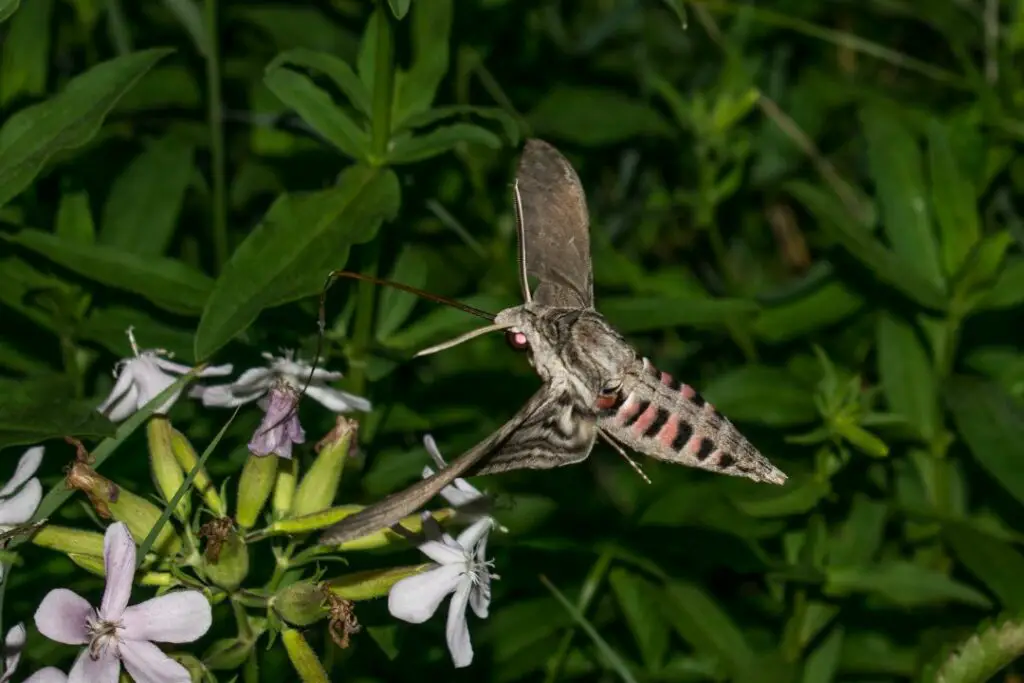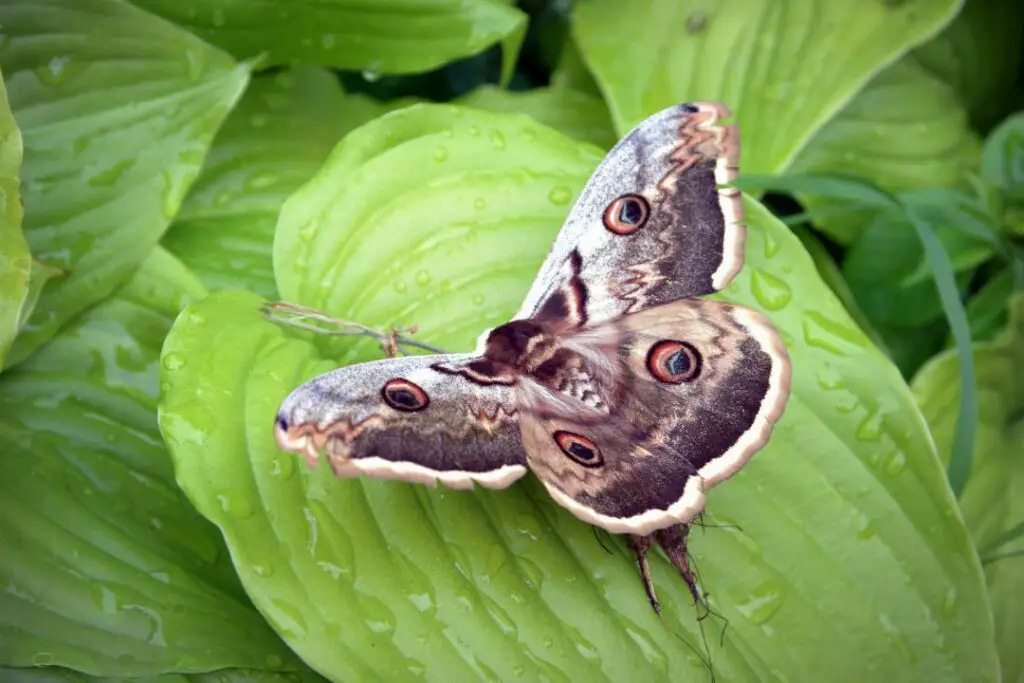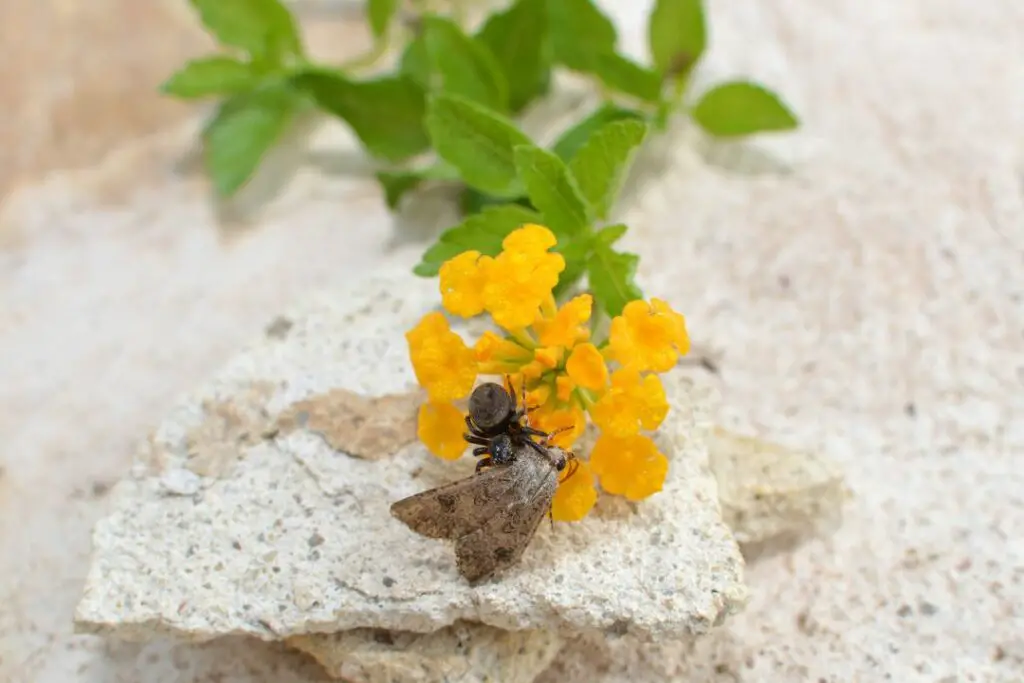Yes, believe it or not, some moths have developed a taste for meat instead of their regular liquid diet of nectar. So, who are these predatory critters?
I was shocked when I first discovered that the creatures I once saw as so gentle even had it in them to consume other animals.
And it’s not just adult moths. Some species have become deadly hunters, even in their larval form (the caterpillar).
Let’s dive into meeting these insect-eating carnivores and reveal some things that might shock you.
Insect Eating Moths & Caterpillars
We’re coming to the end of the moth season here in the UK, so what better time to dive into the nitty-gritty world of carnivorous moths and caterpillars?
These aren’t your grandma’s garden pests; they’re the insect world’s little nightmares.
Planthopper Parasite Moth (Fulgoraecia exigua)
This moth is notorious for parasitizing planthoppers. It lays its eggs on plants that regularly host their favoured prey insects.
When the larvae hatch, they quickly seek out the closest planthopper. It begins to attack by latching onto them just under the wing before burying its jaws into the victim.
These ectoparasites will slowly suck all bodily fluids out of the poor planthopper.
This horrifying process gives the larva the energy to make a cocoon and continue its life cycle to become a grey moth.
Here is a larva doing its work in real-time.
Laetilia Moth (Laetilia coccidivora)
This Pyralid moth is a scale insect’s worst nightmare.
When they hatch as tiny caterpillars, they instantly hunt for their favourite meal, the scale insect.
They’ll hunt down young and consume eggs to get the necessary nutrients to transform into a moth.
Fascinatingly, these ingenious insects store the carminic acid they get from consuming their prey and use it as a defence against their own list of deadly predators.
*Additional reading – Don’t miss our guide on which animals eat moths to meet some genuinely deadly garden predators.
Pinion Moths (Lithophane)
Like many moths, the Pinion seems pretty unassuming in its adult form, but it’s a different story in their larval stage.
These moths will lay their eggs like any other, but here’s the kicker. Some of these larvae pass up standard plant food in favour of a more protein-rich meal.
This comes in the form of sawfly larvae and, even worse, their own kin.
Yep, these cannibalistic caterpillars will kill and costume their own kind without any trouble.
Sooty-winged Chalcoela (Chalcoela iphitalis)
This moth turns the tables on caterpillar-eating wasps when it lays eggs. The larvae will crawl into wasp nests at night when they have much less chance of being detected.
When they reach the cells of larvae and pupae, they’ll begin to consume them until they’ve had their fill.
When ready, they’ll make a cocoon inside an empty cell in the nest before leaving in a flutter as a fully-grown moth.
Vampire Moths (Calyptra)
These moths are the stuff of nightmares. They’ve got a barbed proboscis that can pierce the skin of large animals, including humans, to suck blood.
Scientists believe it’s the same technique that moths use to pierce the skin of fruit that has evolved to puncture skin.
The video below shows a willing participant offering up their finger to the thirsty insect, which made me feel slightly queasy.
Cicada Parasite Moth (Epipomponia nawai)
These moth larvae attach themselves to cicadas and feed on their flesh.
When they’ve had their fill, they spin silk to dangle themselves off the host before heading to a safe spot in a tree to make their cocoon.
Interestingly, these are one of very few species of moth that can reproduce asexually if the female doesn’t find a mate.
Hawaiian Eupithecia Moths
We’ve saved the best for last with what could be the most alien-looking caterpillar we’ve encountered.
It’s equipped with six needle-like legs beneath razor-sharp mandibles.
It relies on the element of surprise for attack, stiffening its body and appearing like any other branch or stem.
But when an unsuspecting victim happens to step too close, it quickly whips its body around before injecting all six needles and proceeding to eat.
In Conclusion
From parasites to bloodsuckers, there’s much more to moths than you might think.
This is by no means an exhaustive list. Plenty more subspecies of moths and butterflies have opted for a more meaty diet.
If you’ve enjoyed this read, then make sure to check our other articles below, which are packed with fascinating insights into moths and pollinators.




